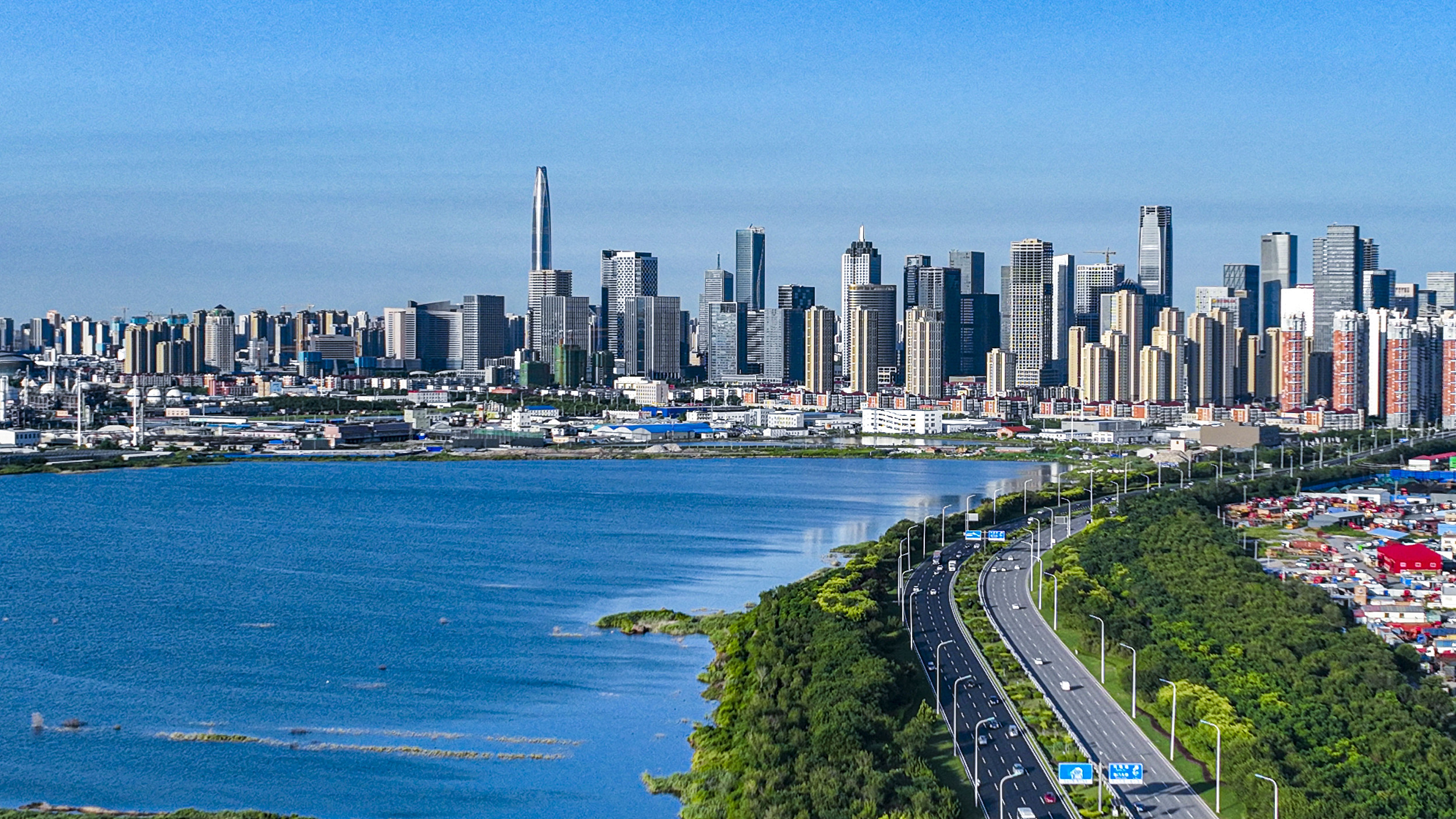By?LI?Linxu
As part of its efforts to build an IPR powerhouse, China has unveiled the first batch of cities and regions which were selected to construct demonstration zones for IPR protection.
Tianjin's Binhai New District, Shanghai's Pudong New Area, Jiangsu's Nanjing and Suzhou, and Sichuan's Chengdu are on the list.
Zhejiang's Hangzhou and Ningbo, Guangdong's Guangzhou and Shenzhen, and Anhui's Hefei are also on the list.
The ten cities and regions are tasked with comprehensively strengthening IPR protection and advancing high-quality development, according to a notice released by the China National Intellectual Property Administration (CNIPA).
They are urged to reinforce the overall deployment of IPR protection in light of local conditions.
Efforts will also be made to further reform the system and mechanism of IPR protection.

An aerial view of Tianjin's Binhai New District. (PHOTO: VCG)
More resources will be made available to help build the demonstration zones into IPR protection hubs, so as to drive the country's overall IPR protection to a new level, and further invigorate the vitality of innovation and creativity across society.
This is an important initiative to build a first-class business environment, said an official from CNIPA, adding that a series of policy measures, such as fast coordinated IPR protection and centralized review of patent applications, will be rolled out by relevant departments to support the construction of such demonstration zones.
In recent years, China has made historic achievements in the field of IPR protection. The country has given more prominence to IPR protection, introduced a series of major policies, actions and plans, and implemented a strict IPR protection system.
By 2035, China's IPR competitiveness will rank among the top in the world, according to a 15-year plan jointly released by the CPC Central Committee and the State Council in 2021.
The move to construct demonstration zones of IPR protection is a follow-up to implementing the spirit of the 20th CPC National Congress, which vowed to strengthen the legal protection of IPR, in order to establish a foundational system for all-around innovation.
The trio will conduct a series of experiments in fields such as life science, fluid physics, combustion science and materials science. Notably, this is the first time that fruit flies have been taken on a Chinese space mission as experimental subjects. What made scientists choose fruit flies? What experiment will they undergo?
